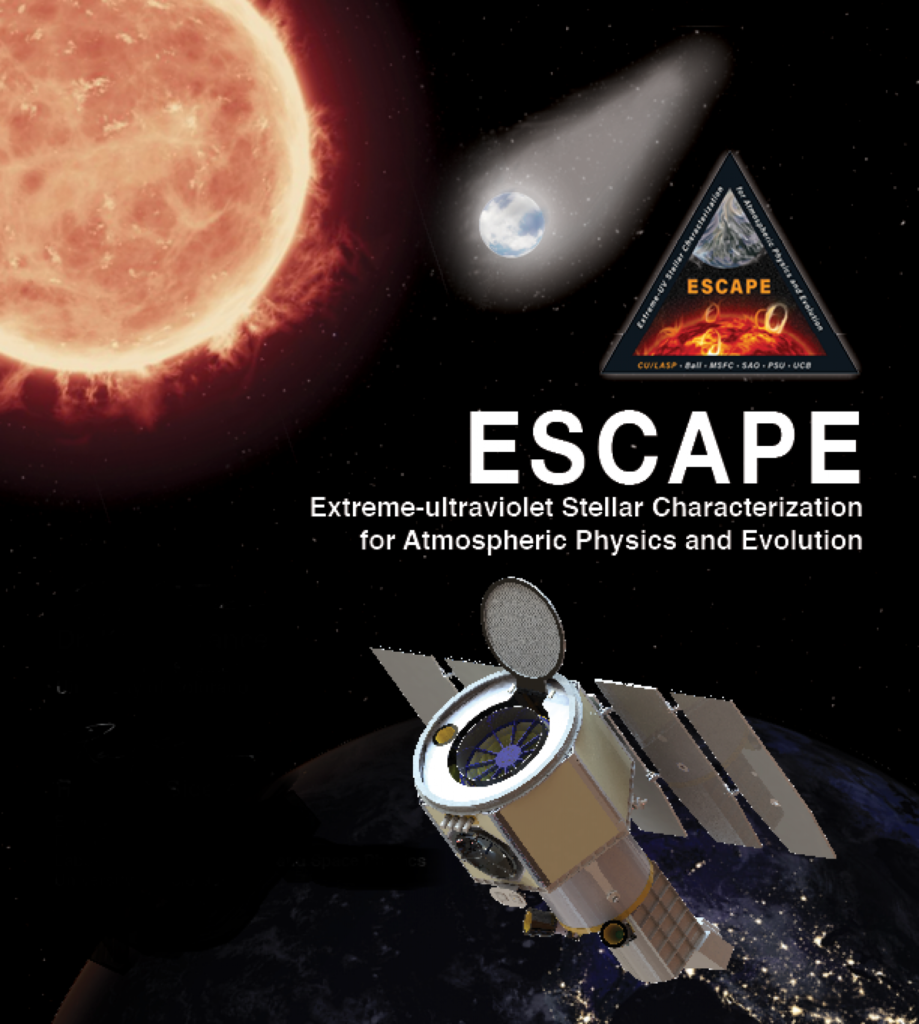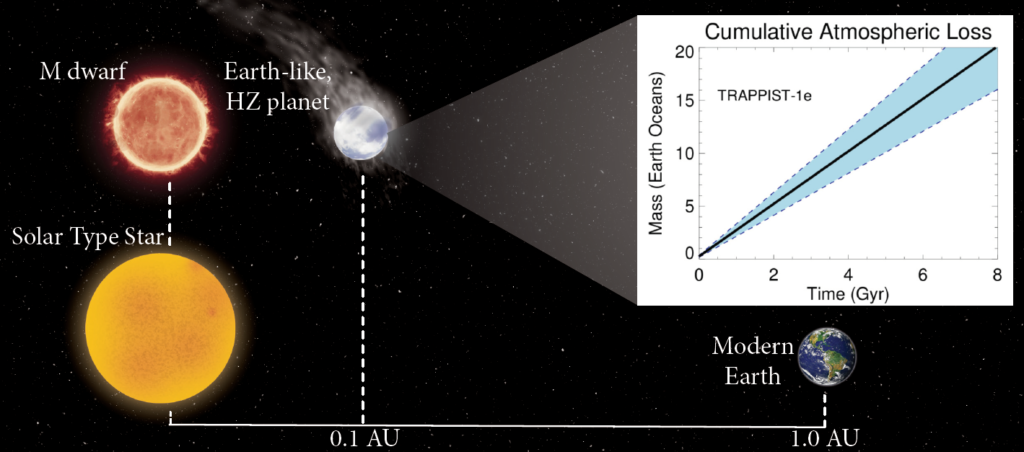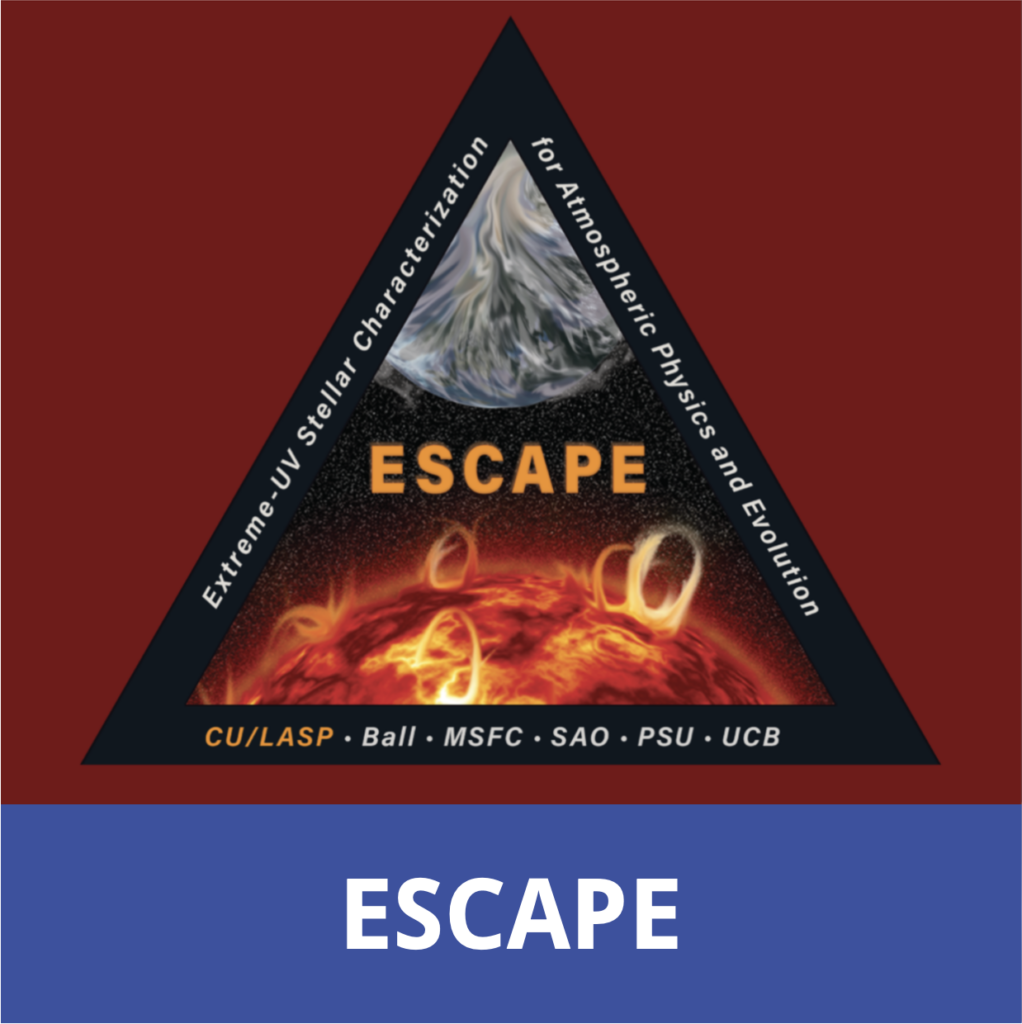The Extreme-ultraviolet Stellar Characterization for Atmospheric Physics and Evolution (ESCAPE) mission aims to find environments beyond Earth’s solar system that might host planets with thick atmospheres to support life.
The long-term stability of exoplanetary atmospheres depends critically on the extreme-ultraviolet (EUV) flux from the host star. The EUV flux likely drives the demographics of the short-period planet population as well the ability for rocky planets to maintain habitable environments long enough for the emergence of life. ESCAPE is an astrophysics Small Explorer proposed to NASA that employs extreme- and far-ultraviolet spectroscopy (70 – 1800 Angstroms) to characterize the high-energy radiation environment in the habitable zones (HZs) around nearby stars.
ESCAPE provides the first comprehensive study of the stellar EUV environments that control atmospheric mass-loss and determine the habitability of rocky exoplanets. ESCAPE’s prime mission is driven by two spectroscopic surveys: 1) a broad survey of EUV and FUV flux from 200 nearby (d < 100 pc) F, G, K, and M stars, providing direct input into atmospheric evolution models. The mission targets stars with a range of ages and activity levels, and places an emphasis on stars with known exoplanets. 2) A deep monitoring survey (~2 weeks per star) of 24 targets-of-interest to measure the stellar flare frequency distribution and constrain the CME rate and high-energy particle fluence from these objects. Together, these surveys provide the crucial stellar drivers that regulate habitable environments on planets targeted by upcoming atmospheric characterization missions, from JWST to LUVOIR.
For more details on ESCAPE, check out the ESCAPE webpage: escapetelescope.org.


Published Work:
- https://ui.adsabs.harvard.edu/abs/2019BAAS…51c.320Y/abstract
- https://ui.adsabs.harvard.edu/abs/2019BAAS…51c.300Y/abstract
- https://ui.adsabs.harvard.edu/abs/2022JATIS…8a4006F/abstract
- https://ui.adsabs.harvard.edu/abs/2019SPIE11118E..08F/abstract
The text of this webpage is available for modification and reuse under the terms of the Creative Commons Attribution-Sharealike 3.0 Unported License and the GNU Free Documentation License (unversioned, with no invariant sections, front-cover texts, or back-cover texts).


